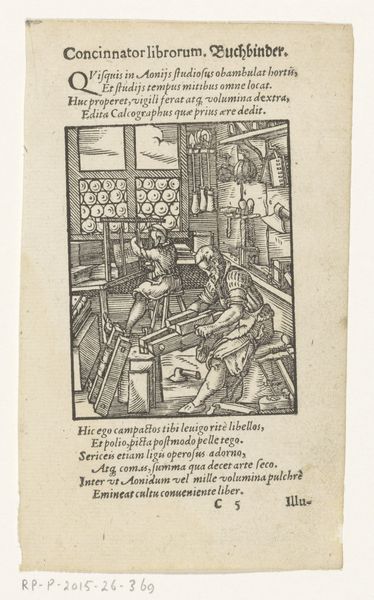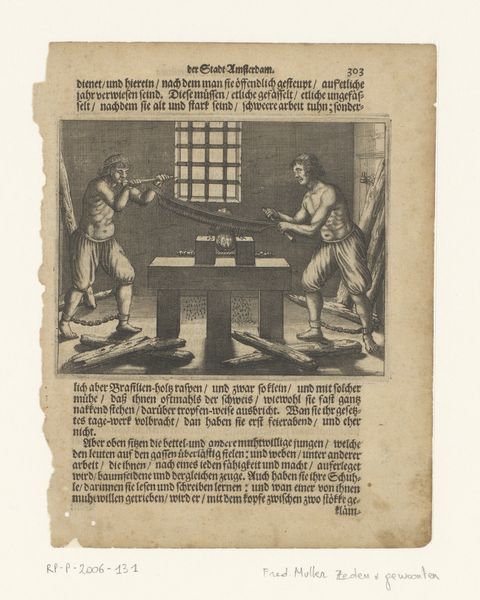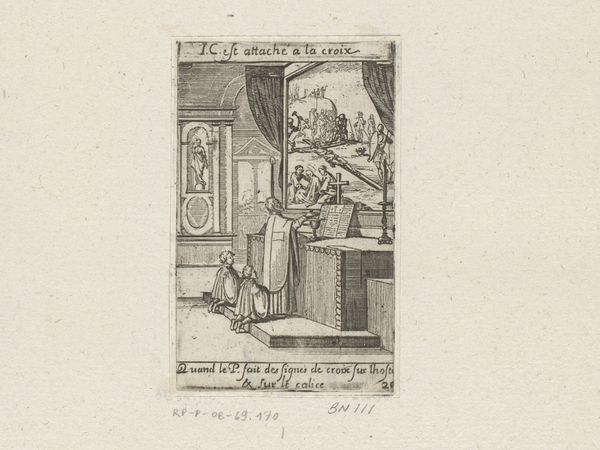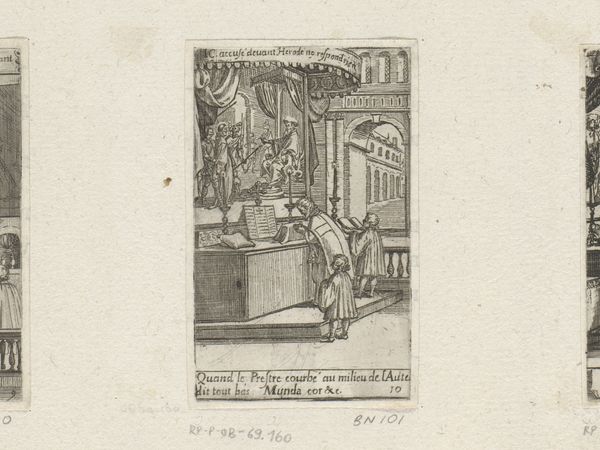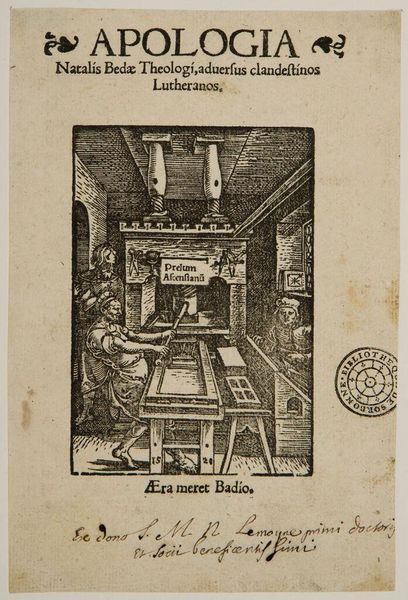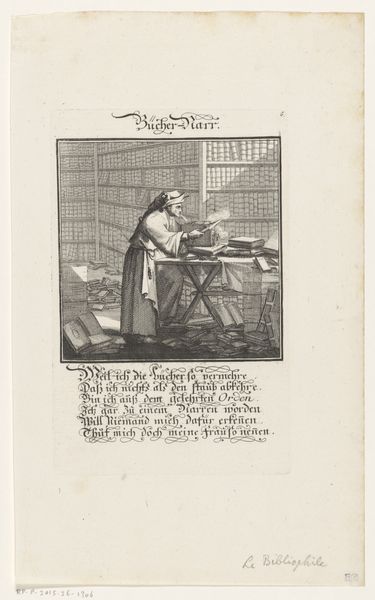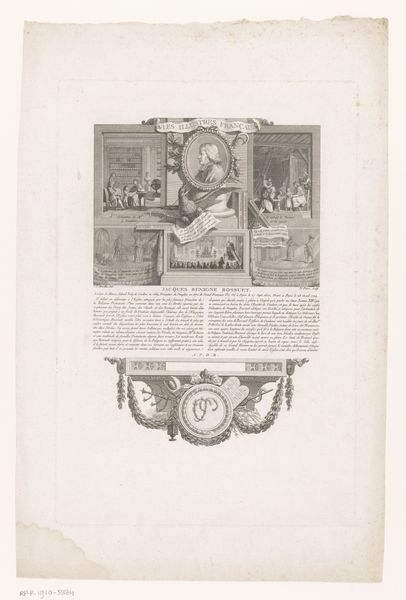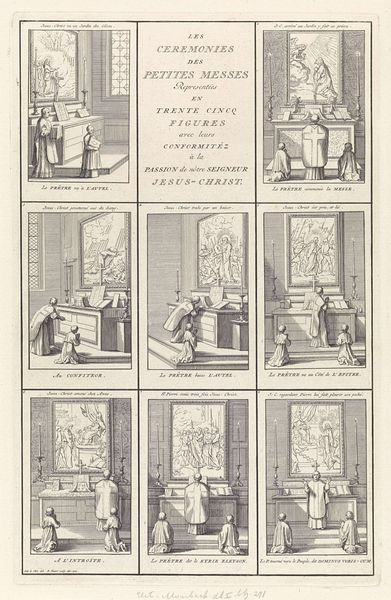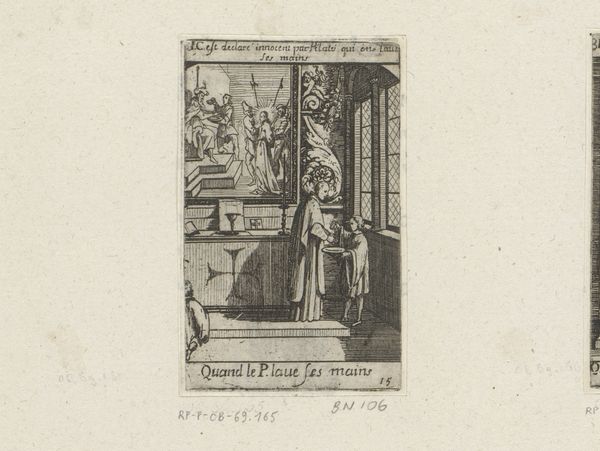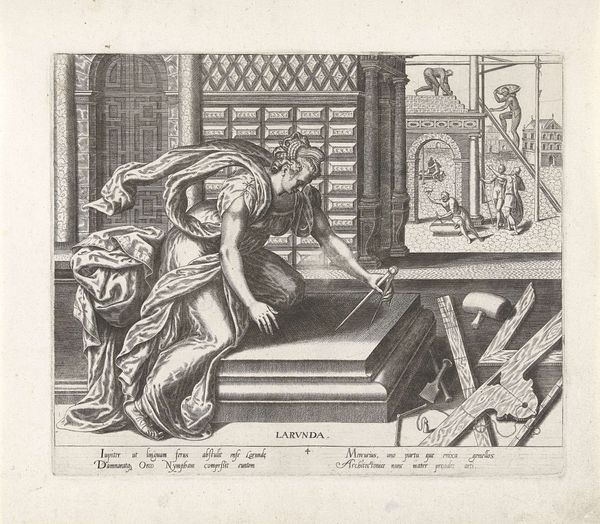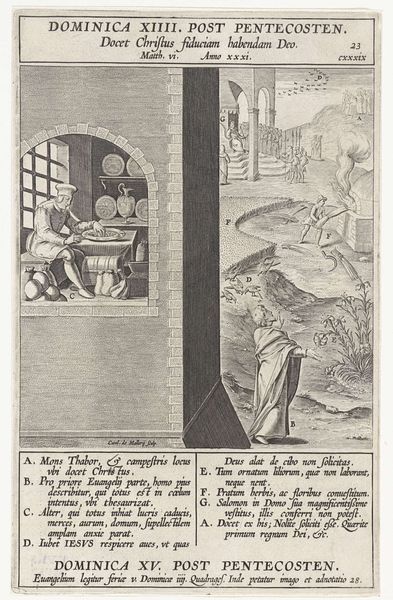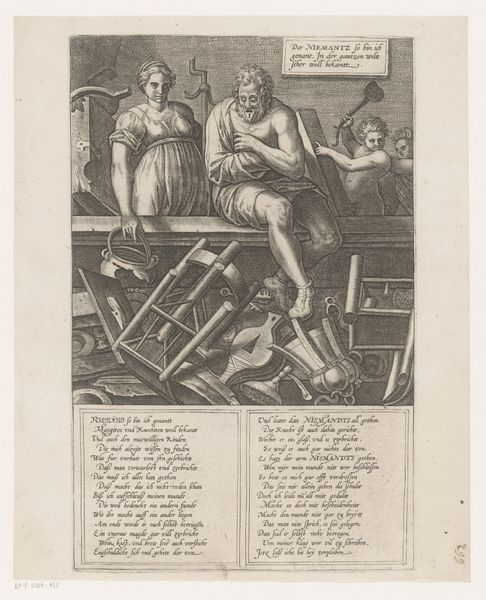
print, engraving
#
baroque
# print
#
line
#
genre-painting
#
engraving
Dimensions: height 131 mm, width 88 mm
Copyright: Rijks Museum: Open Domain
Editor: So, here we have "Plaatdrukker," an engraving made in 1698 by Christoph Weigel, housed here at the Rijksmuseum. The detail is just amazing. You can practically feel the effort of the printer operating that massive press! What jumps out at you when you look at it? Curator: Well, seeing this piece always makes me consider the socio-political power of printmaking at that time. Before photography, prints like this were vital for disseminating information, shaping public opinion, and even solidifying religious or political viewpoints. Look at how meticulously Weigel rendered the printer at work. It's not just documenting a craft; it’s subtly elevating it. Editor: Elevating it how? Curator: By showcasing the labor involved in producing and distributing images and ideas, it is celebrating craftmanship as critical infrastructure for a changing world. Also, think about who had access to these prints, and how images reinforced hierarchies but were also distributed as part of trade throughout globalized networks. Editor: That’s interesting – it almost turns the artisan into a kind of hero of the Enlightenment, quietly spreading knowledge. So it's not just a snapshot of a print shop but a commentary on the broader role of images? Curator: Exactly. The 'genre painting' aspect gives us insight into daily life, but its wider cultural significance touches on art’s public function and the dissemination of propaganda during period upheaval and change. Does thinking about that change your initial reaction to the piece at all? Editor: Absolutely! I initially just saw the craft, the technique, but now I see it's about who controls the images and the message. It feels much more complex. Curator: Indeed. The context always shifts our perspective.
Comments
No comments
Be the first to comment and join the conversation on the ultimate creative platform.
